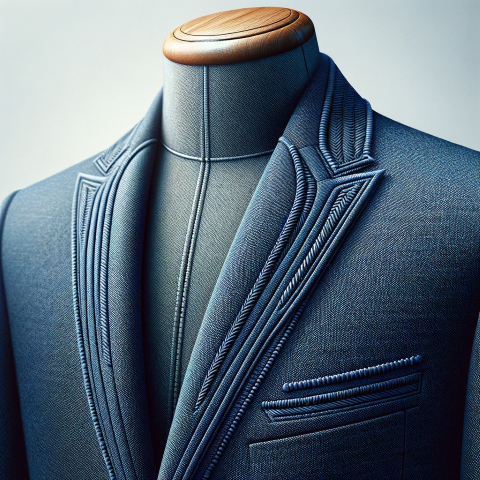Last Updated on: 26-May-2024 (2 months, 1 day ago)
Share on Facebook • Share on Twitter
The primary function of a welt is to add reinforcement to a seam, helping to prevent it from tearing or unraveling over time. This is particularly important in high-stress areas like the crotch of pants, the arms of a jacket, or the back of a chair.
Welts can be made from a variety of different materials, including leather, vinyl, fabric, and other synthetic materials. They can be sewn into the seam using a variety of different stitches, including straight stitches, zigzag stitches, and double-stitch seams. The type of stitch used will depend on the fabric and the level of reinforcement needed.
In addition to their functional benefits, welts can also be used for decorative purposes. They can be made in a variety of different colors and patterns to match or complement the main fabric of the garment, and can add a distinctive visual element to the finished product. They can also be used to add contrast or texture to a garment, creating a more interesting and dynamic design.
One common type of welt is the flat welt, which is used in the construction of jackets, pants, and other tailored garments. Flat welts are typically made from the same fabric as the garment, and are sewn into the seam to create a smooth, flat finish.
Another type of welt is the piping welt, which is used in the production of upholstery and other soft furnishings. Piping welts are typically made from a contrasting fabric, and are sewn into the seam to create a raised, three-dimensional effect.
Overall, welts are an important component of many different types of textile products. They add strength and durability to seams, helping to prevent them from tearing or unraveling over time. They can also be used for decorative purposes, adding visual interest and contrast to a garment or other textile product. Whether used for function or for style, welts are an essential element of many different types of textiles.
�1. A strip of material seamed to a pocket opening as a finishing, as well as a strengthening device. 2. A raised or swelled lap or seam. 3. A covered cord or ornamental strip sewed on a border or along a seam. 4. In knitting, it is flat-knitted separately and then joined to the fabric by looping or hand knitting, as the heel to the stocking. 5. A ribbed piece of knit goods used in forming the end of a sleeve or sock to prevent rolling or raveling.
Some more terms:
Pad-Steam Process
The Pad-Steam process is a textile finishing technique used to apply chemicals or dyes to fabric. It is a combination of two steps: padding and steaming. This process is widely employed in the...
Read about Pad-Steam ProcessStorm flap
A storm-flap is a protective covering found on various types of clothing, bags, and other outdoor gear. It is designed to provide an additional layer of protection against harsh weather conditions,...
Read about Storm flapBias
Bias is a term used to describe a fabric or garment that has been cut diagonally across the grain rather than parallel to the weave. This results in a material that has more stretch and drape than...
Read about BiasMarocain
Marocain, also known as Moroccan crepe, is a type of fabric commonly used in the textile industry. It is known for its unique texture, drape, and versatility. The term "Marocain" originates from the...
Read about MarocainBirdseye
Cotton and Linen or blend of rayon staple and cotton, usually in a dobby weave with a smooth, clear finish and small diamond-shaped figures with a dot in the center of each. The pattern suggests the...
Read about BirdseyeCuring
a) A process that follows the addition of a finish to a textile fabric and in which appropriate conditions are used to effect a chemical reaction. NOTE: Heat treatment for several minutes is common,...
Read about CuringApplique
1) Decoration or trimming cut from one piece of fabric and stitched to another, usually with a satin stitch, to add dimension and texture. If the appliqu? occupies a significant amount of the design,...
Read about AppliqueBatlk
A method orginated in Java of resist dyeing which employs wax as the resist. The pattern is covered with wax. and the fabric is then dyed, producing a white design on a dyed ground. The waxed...
Read about BatlkAdd a definition
- The term you want to define
- Its definition in 500 words or less
- Attach an image if necessary.
- Optionally, tell us about yourself in 200 words or less!
Companies for Welt:
- Company name
- Company address
- Attach a logo, if necessary.
- Optionally, tell us about yourself in 200 words or less!

 Many Italian textile mills are located in picturesque villages and towns, adding to their charm and appeal.
Many Italian textile mills are located in picturesque villages and towns, adding to their charm and appeal.

